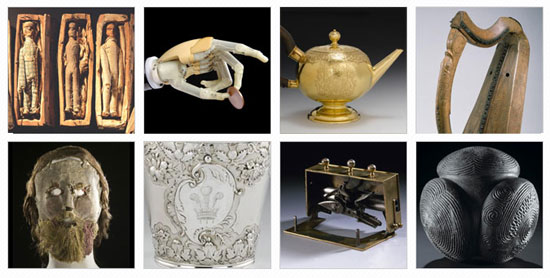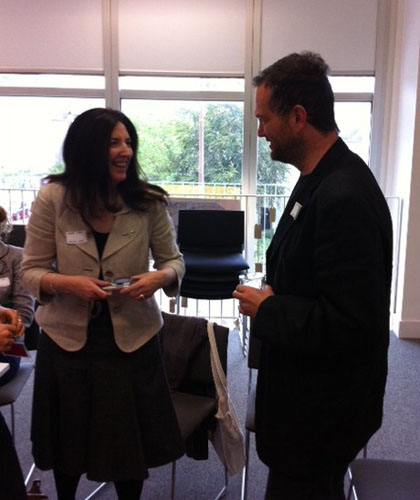When I first read about the 26 Treasures project in an email in late 2010 I was trapped at home, snowbound, and worrying about a huge pile of panel and label printouts for the new animal galleries that were awaiting my eager proofreader’s pencil back in the office. The writer’s collective, 26, fresh from their success with a similar project in the V&A’s British Galleries, were looking to pair up 26 writers with 26 of our objects and given them a fresh spin, an alternative label, each of which had to be 62 words (plus a title if they wished). Having spent much of the last year working with curatorial colleagues to fit object stories into strict 25-word label limits, the idea of trying to bring an object to life in 62 words sounded like unadulterated freedom!
In the New Year, once the snow had finally melted, the reality of the challenge for National Museums Scotland hit home. How could we pick just 26 objects out of the thousands on display? We quickly decided that focusing on the Scotland galleries would be a good start, after all, the writers would be doing their research and writing before the new galleries had opened! It also fitted nicely with the proposed winter timescale – the display period will cover two key Scottish dates, kicking off just after St Andrew’s Day, on 1 December, and finishing a few days after Burns Night (it runs until Sunday 29 January).
So, working with a range of curators across our collections departments, we compiled a long list. We also considered the star objects featured on our website, the objects feted by our volunteer guides as touching a chord with our visitors, and objects that might appeal to the writers in terms of their hidden stories, their wider connections, as well as having enough visual appeal to attract the visitor to look again.
Then, in making the final selection, we tried to choose a strong spread of treasures across the floors of the museum, a balance of ‘big names’ (the Lewis Chessmen, Robert the Bruce, Bonnie Prince Charlie) and ‘real’ people’s stories (Jonet’s gown of repentance, Daniel Laidlaw’s Victoria Cross, Mary Barbour’s rent strike rattle), and a smattering of science and archaeology amongst the more obviously Scottish history objects. There wasn’t room for everything of course, and I’m sure some will ask ‘how could you leave out the Hunterston Brooch, or the Monymusk Reliquary?’ It would be fascinating to hear which 26 objects others would select to tell Scotland’s story…

Anyway, I digress. While we were selecting the objects, 26 was busy recruiting the writers. And I’m happy to say they are just as diverse as our objects. We’ve got poets and journalists, academics and screenwriters, novelists and copywriters. What they all have in common is their love of language and their enthusiasm for the museum and the way objects can tell stories. They were paired up at random with their objects (names out of a hat, a hard hat in this case, as I’d been busy installing part of the new Imagine gallery earlier in the day), sent some background information and a photograph to whet their appetite, and set loose to research, investigate and generally commune with their objects.

Each of the writers has written their own blog piece about their experience of the project and I encourage you to read them on the 26 Treasures website, as they give another level of insight into the objects themselves and the creative process.
